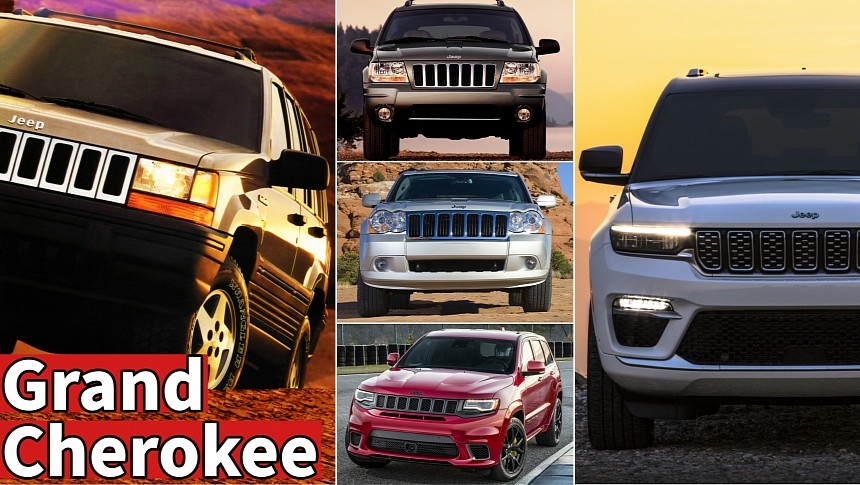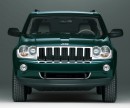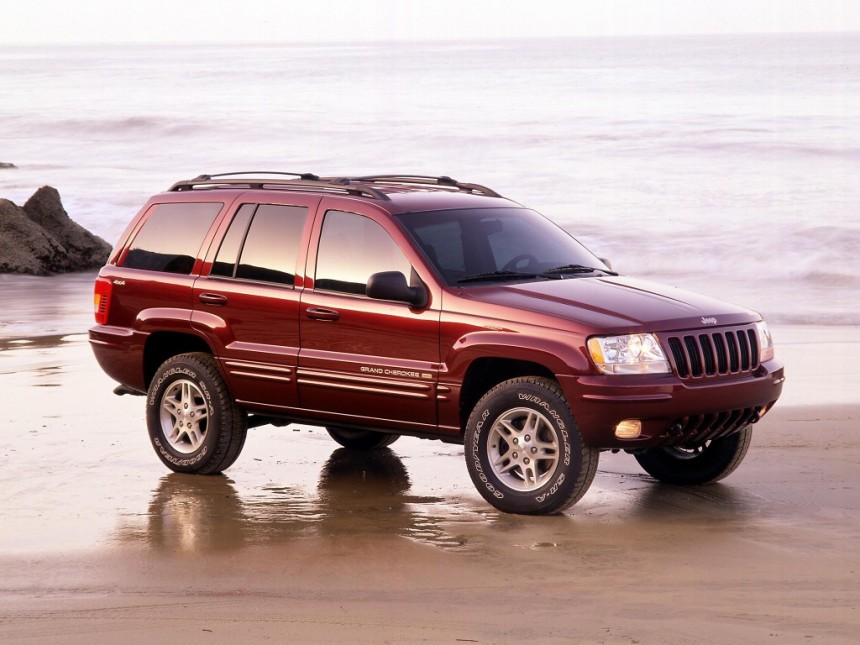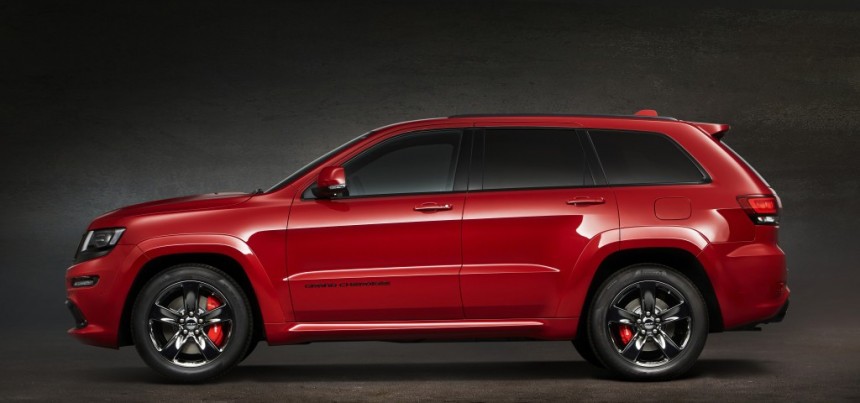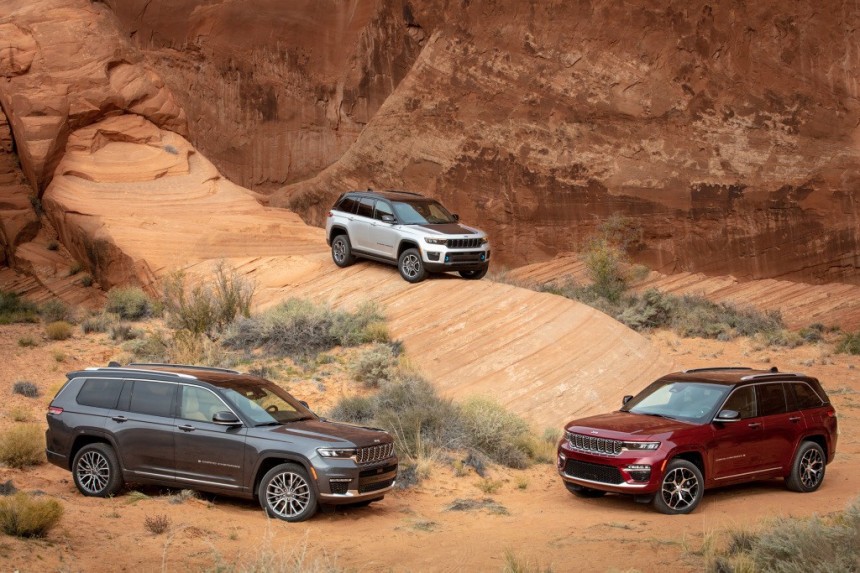The American Motors Corporation and Chrysler initially developed the Grand Cherokee as the replacement for the Cherokee. Not the first-gen SJ based on Wagoneer underpinnings, though. The ZJ series replaced the more compact XJ, which rolled out in 1983 as the first off-road vehicle from an American automaker to feature unibody construction. The XJ was a watershed vehicle in and of itself due to being the first completely new Jeep since the original Wagoneer.
Prior to Chrysler acquiring American Motors Corporation in 1987, the Southfield-based company developed the XJ with the financial backing of Renault in two body styles. The availability of a four-door Cherokee ensured the commercial success of this overlanding icon, and AMC was completely aware that four doors were a must-have for the Grand Cherokee.
Renault's money had unfortunately dried up during the development of the ZJ, which forced the French outfit to sell American Motors Corporation to Chrysler. Masterminded by Lee Iacocca, then big kahuna at Chrysler, the acquisition would bear fruit beyond his wildest dreams. Originally intended to be joined by a Dodge-branded sibling, the Grand Cherokee would have been called Cherokee had Iacocca not decided to keep making the XJ in parallel with the ZJ. In fact, the first-gen Cherokee outlived the first-gen Grand Cherokee.
In hindsight, Iacocca was completely right on this one, with Chrysler continuing XJ production until the 2001 model year for the United States market and through 2014 in China. The successor's name was also right because the ZJ is noticeably larger than the XJ. The question is, how did the Grand Cherokee become a staple in the world of SUVs and Jeep? To answer that question, we will have to go back in time to the 1992 North American International Auto Show in Detroit.
The first Chrysler-made Jeep made its debut in a flashy manner. Said PR stunt generated so much press coverage that everyone and their dog was aware of the Grand Cherokee pretty much immediately after Bob Lutz drove a ZJ from the Jefferson North Assembly Plant to what's now called Huntington Place. Joined by Detroit mayor Coleman Young in the front passenger seat, Lutz drove said vehicle up the stairs of the convention center, smashing through a huge glass window. With thousands of tiny glass pieces on the hood, Lutz and Young continued their journey to the show stand, much to the delight of the journalists there.
This PR stunt was cooked up by head of communications Tom Kowaleski, who pitched his idea to the top brass as a more cost-efficient and impactful way of getting the Grand Cherokee out there compared to simply paying for commercials. It should also be mentioned that Chrysler replaced the Cobo Hall's original glass window with a tempered glass window out of an abundance of safety and caution. The tempered glass was also joined by small explosive charges in the frame, which were detonated remotely when the front bumper of the red-painted Laredo touched the glass.
Also manufactured in Austria, Argentina, and Venezuela, the ZJ ran between the 1993 and 1998 model years with a choice of gasoline and diesel lumps. The 5.9-liter Magnum V8 stands out as the top dog thanks to 245 ponies and 345 pound-feet (468 Nm) of torque. The first series-production SUV to feature a driver-side airbag sold 128,960 units in the United States back in 1992. The ZJ eventually topped 279,195 sales stateside in 1996.
1998 saw the introduction of the WJ, as well as Chrysler's merger of equals with Daimler. The subsequent entity was anything but a merger of equals due to subpar integration between two very different parties. Internal friction led to Daimler searching for a buyer, that buyer being a private equity firm. Italian automaker Fiat bought 53.5 percent of Chrysler's shares in 2011, leading to the birth of Fiat Chrysler in 2014.
More refined yet also more rugged than its forerunner, the WJ carried over the AMC 242 inline-six engine of the original. The Magnum-designated V8 mills, however, were replaced by the 4.7-liter PowerTech V8. Prospective customers were presented with a choice between a four-speed and a five-speed automatic.
Going on sale for the 1999 model year, the WJ is also remembered for its automatic four-wheel-drive system. Based on Quadra-Trac II, the Quadra-Drive system builds on the former with the addition of limited-slip differentials. These diffs channel available torque to whichever wheel needs it the most in a given situation.
Revealed at the 2004 New York International Auto Show for the 2005 model year, the WK improved on the WJ in pretty much every single respect. From the interior design to the oily bits, that is. For example, the front suspension came in the guise of an independent setup. Another notable improvement was the rack-and-pinion steering. Last but certainly not least, Quadra-Drive II also entered the scene with electronic LSDs.
The WK introduced the 5.7-liter HEMI to the Grand Cherokee. For the 2006 model year, Jeep made a few jaws drop in awe with the reveal of the SRT8. Then the most powerful and quickest Jeep entitled to wear a license plate, the Street and Racing Technology 8 came with a 6.1-liter version of the third-generation HEMI.
With 415 horsepower and 410 pound-feet (556 Nm) on deck, in combination with an SRT-tuned automatic of Mercedes-Benz origin, the SRT8 was pretty damn exciting for that era. It was also considerably more affordable than the Mercedes-Benz G 55 AMG, and it was also quicker from zero to 60 miles per hour (97 kilometers per hour) than the Porsche Cayenne Turbo.
Refreshed for the 2008 model year, the WK received a thorough makeover in 2010 as a 2011 model. The resulting WK2 is joined at the hip to the WD-series Dodge Durango and – get this – closely related to the W166 Mercedes-Benz M-Class. One could argue the WK2 is day-and-night different from the WK, although the previous gen's intrinsic qualities carry over to the more refined WK2.
Equipped with independent suspension at every corner for improved handling and better ride quality, the WK2 is very capable off the beaten path as well. Off-road shenanigans are the specialty of the Trailhawk grade. The SRT8 was renamed SRT and came with the 6.4-liter HEMI we all know and love. Jeep didn't stop there but improved the recipe with the no-nonsense Trackhawk.
Revealed as a 2018 model at the 2017 New York International Auto Show, the Grand Cherokee Trackhawk stands out above its peers due to the 6.2-liter supercharged HEMI that Chrysler advertises as the Hellcat. With 707 horsepower and 645 pound-feet (875 Nm) at its disposal, the Trackhawk was the most powerful and quickest SUV of its time. This generation of the Grand Cherokee also received the ZF-developed 8HP automatic, which the current-gen WL also uses.
The fifth generation made its debut in January 2021 on a Jeep-ified version of the Giorgio platform that Alfa Romeo originally developed with Ferrari's help for the Giulia and Stelvio. Clearly the most dynamic Grand Cherokee there's ever been, the WL launched as a three-row SUV in the guise of the Grand Cherokee L. The two-row Grand Cherokee followed suit as a 2022 model.
A tremendous redesign that's been plagued by a plethora of quality-related issues ever since the first unit rolled off the assembly line, the WL is more than simply a midsize sport utility vehicle. It's a statement in the sense that Jeep introduced a turbo I4 plug-in hybrid powertrain to the detriment of the 5.7-liter HEMI. The naturally-aspirated V8 was dropped after the 2022 model year.
Commercially successful though it may be, the JL-series Wrangler has nothing on the Grand Cherokee. Precisely 223,345 examples of the unibody sport utility vehicle were delivered stateside in 2022 versus 181,409 units of the Wrangler. Given the ballooning demand for SUVs in the United States and pretty much everywhere else in the world, the Grand Cherokee's future is fully secured.
Renault's money had unfortunately dried up during the development of the ZJ, which forced the French outfit to sell American Motors Corporation to Chrysler. Masterminded by Lee Iacocca, then big kahuna at Chrysler, the acquisition would bear fruit beyond his wildest dreams. Originally intended to be joined by a Dodge-branded sibling, the Grand Cherokee would have been called Cherokee had Iacocca not decided to keep making the XJ in parallel with the ZJ. In fact, the first-gen Cherokee outlived the first-gen Grand Cherokee.
In hindsight, Iacocca was completely right on this one, with Chrysler continuing XJ production until the 2001 model year for the United States market and through 2014 in China. The successor's name was also right because the ZJ is noticeably larger than the XJ. The question is, how did the Grand Cherokee become a staple in the world of SUVs and Jeep? To answer that question, we will have to go back in time to the 1992 North American International Auto Show in Detroit.
Jeep Grand Cherokee Gen 1 (ZJ)
This PR stunt was cooked up by head of communications Tom Kowaleski, who pitched his idea to the top brass as a more cost-efficient and impactful way of getting the Grand Cherokee out there compared to simply paying for commercials. It should also be mentioned that Chrysler replaced the Cobo Hall's original glass window with a tempered glass window out of an abundance of safety and caution. The tempered glass was also joined by small explosive charges in the frame, which were detonated remotely when the front bumper of the red-painted Laredo touched the glass.
Also manufactured in Austria, Argentina, and Venezuela, the ZJ ran between the 1993 and 1998 model years with a choice of gasoline and diesel lumps. The 5.9-liter Magnum V8 stands out as the top dog thanks to 245 ponies and 345 pound-feet (468 Nm) of torque. The first series-production SUV to feature a driver-side airbag sold 128,960 units in the United States back in 1992. The ZJ eventually topped 279,195 sales stateside in 1996.
Jeep Grand Cherokee Gen 2 (WJ)
More refined yet also more rugged than its forerunner, the WJ carried over the AMC 242 inline-six engine of the original. The Magnum-designated V8 mills, however, were replaced by the 4.7-liter PowerTech V8. Prospective customers were presented with a choice between a four-speed and a five-speed automatic.
Going on sale for the 1999 model year, the WJ is also remembered for its automatic four-wheel-drive system. Based on Quadra-Trac II, the Quadra-Drive system builds on the former with the addition of limited-slip differentials. These diffs channel available torque to whichever wheel needs it the most in a given situation.
Jeep Grand Cherokee Gen 3 (WK)
The WK introduced the 5.7-liter HEMI to the Grand Cherokee. For the 2006 model year, Jeep made a few jaws drop in awe with the reveal of the SRT8. Then the most powerful and quickest Jeep entitled to wear a license plate, the Street and Racing Technology 8 came with a 6.1-liter version of the third-generation HEMI.
With 415 horsepower and 410 pound-feet (556 Nm) on deck, in combination with an SRT-tuned automatic of Mercedes-Benz origin, the SRT8 was pretty damn exciting for that era. It was also considerably more affordable than the Mercedes-Benz G 55 AMG, and it was also quicker from zero to 60 miles per hour (97 kilometers per hour) than the Porsche Cayenne Turbo.
Jeep Grand Cherokee Gen 4 (WK2)
Equipped with independent suspension at every corner for improved handling and better ride quality, the WK2 is very capable off the beaten path as well. Off-road shenanigans are the specialty of the Trailhawk grade. The SRT8 was renamed SRT and came with the 6.4-liter HEMI we all know and love. Jeep didn't stop there but improved the recipe with the no-nonsense Trackhawk.
Revealed as a 2018 model at the 2017 New York International Auto Show, the Grand Cherokee Trackhawk stands out above its peers due to the 6.2-liter supercharged HEMI that Chrysler advertises as the Hellcat. With 707 horsepower and 645 pound-feet (875 Nm) at its disposal, the Trackhawk was the most powerful and quickest SUV of its time. This generation of the Grand Cherokee also received the ZF-developed 8HP automatic, which the current-gen WL also uses.
Jeep Grand Cherokee Gen 5 (WL)
A tremendous redesign that's been plagued by a plethora of quality-related issues ever since the first unit rolled off the assembly line, the WL is more than simply a midsize sport utility vehicle. It's a statement in the sense that Jeep introduced a turbo I4 plug-in hybrid powertrain to the detriment of the 5.7-liter HEMI. The naturally-aspirated V8 was dropped after the 2022 model year.
Commercially successful though it may be, the JL-series Wrangler has nothing on the Grand Cherokee. Precisely 223,345 examples of the unibody sport utility vehicle were delivered stateside in 2022 versus 181,409 units of the Wrangler. Given the ballooning demand for SUVs in the United States and pretty much everywhere else in the world, the Grand Cherokee's future is fully secured.
